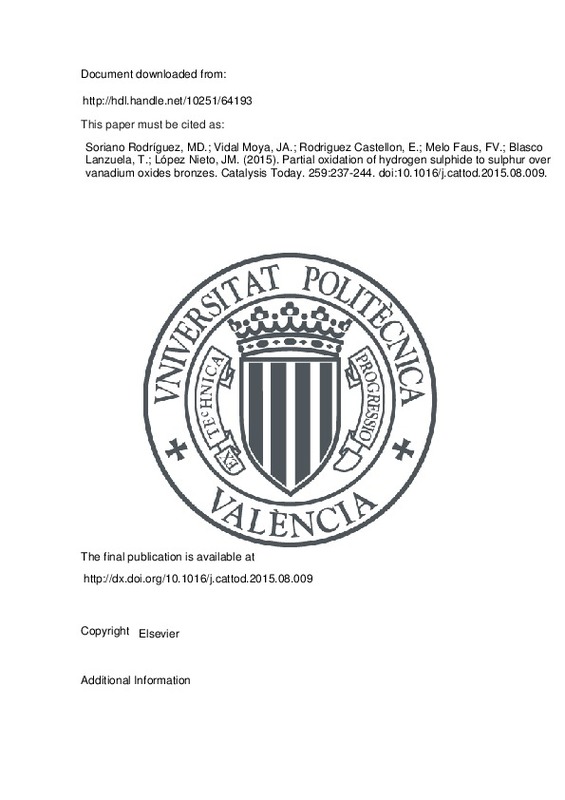JavaScript is disabled for your browser. Some features of this site may not work without it.
Buscar en RiuNet
Listar
Mi cuenta
Estadísticas
Ayuda RiuNet
Admin. UPV
Partial oxidation of hydrogen sulphide to sulphur over vanadium oxides bronzes
Mostrar el registro completo del ítem
Soriano Rodríguez, MD.; Vidal Moya, JA.; Rodriguez Castellon, E.; Melo Faus, FV.; Blasco Lanzuela, T.; López Nieto, JM. (2015). Partial oxidation of hydrogen sulphide to sulphur over vanadium oxides bronzes. Catalysis Today. 259:237-244. https://doi.org/10.1016/j.cattod.2015.08.009
Por favor, use este identificador para citar o enlazar este ítem: http://hdl.handle.net/10251/64193
Ficheros en el ítem
Metadatos del ítem
| Título: | Partial oxidation of hydrogen sulphide to sulphur over vanadium oxides bronzes | |
| Autor: | Rodriguez Castellon, Enrique Melo Faus, Francisco Vicente | |
| Entidad UPV: |
|
|
| Fecha difusión: |
|
|
| Resumen: |
[EN] Me-containing V2O5 materials (Me =Ag, Cu, Ca and Na) were prepared hydrothermally (from aqueous
gels containing V2O5/H2O2/MeClx mixtures, with Me/V ratios of 0.17). The samples were finally heattreated
in air or in ...[+]
|
|
| Palabras clave: |
|
|
| Derechos de uso: | Reserva de todos los derechos | |
| Fuente: |
|
|
| DOI: |
|
|
| Editorial: |
|
|
| Versión del editor: | http://dx.doi.org/10.1016/j.cattod.2015.08.009 | |
| Código del Proyecto: |
|
|
| Agradecimientos: |
|
|
| Tipo: |
|







![[Cerrado]](/themes/UPV/images/candado.png)


